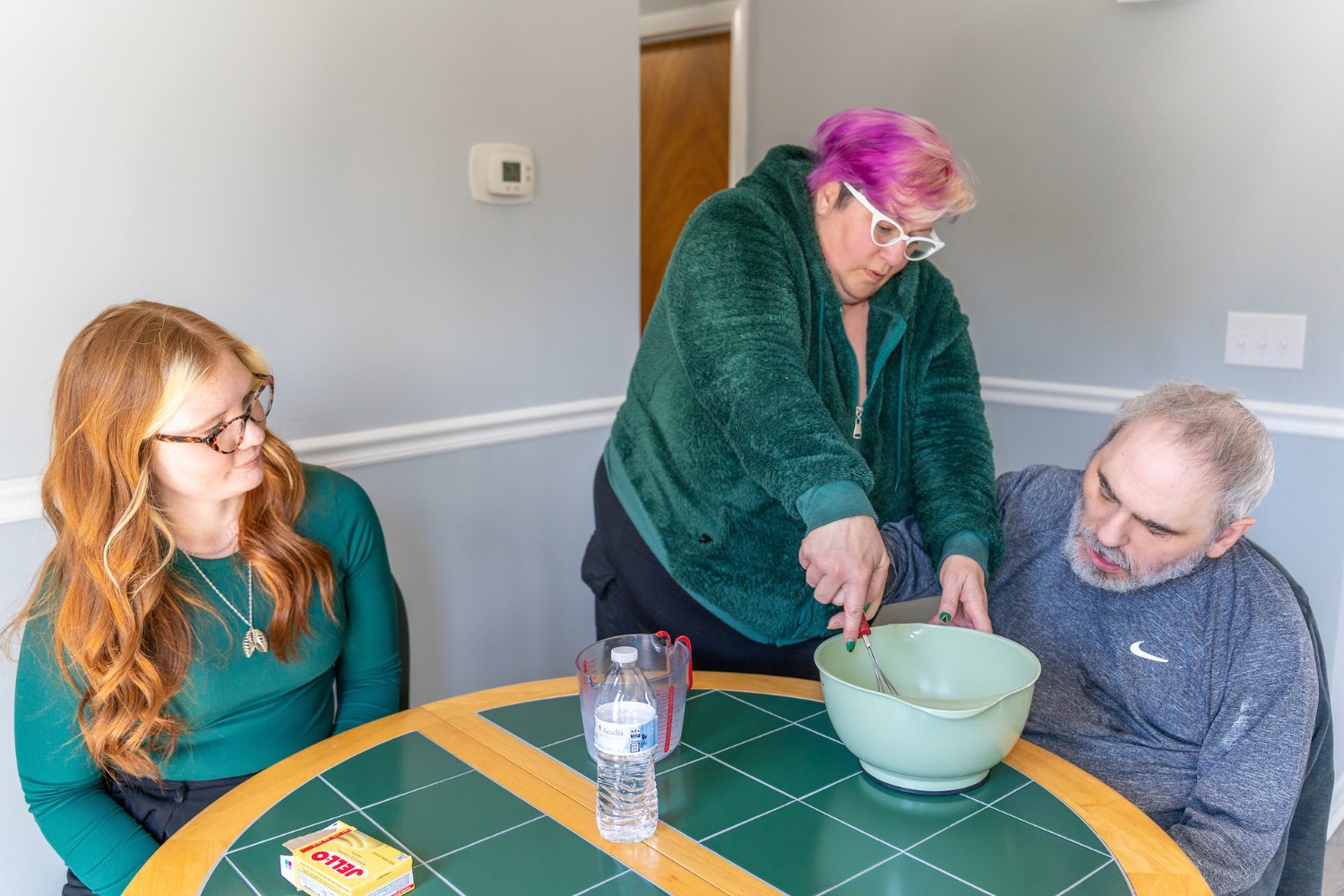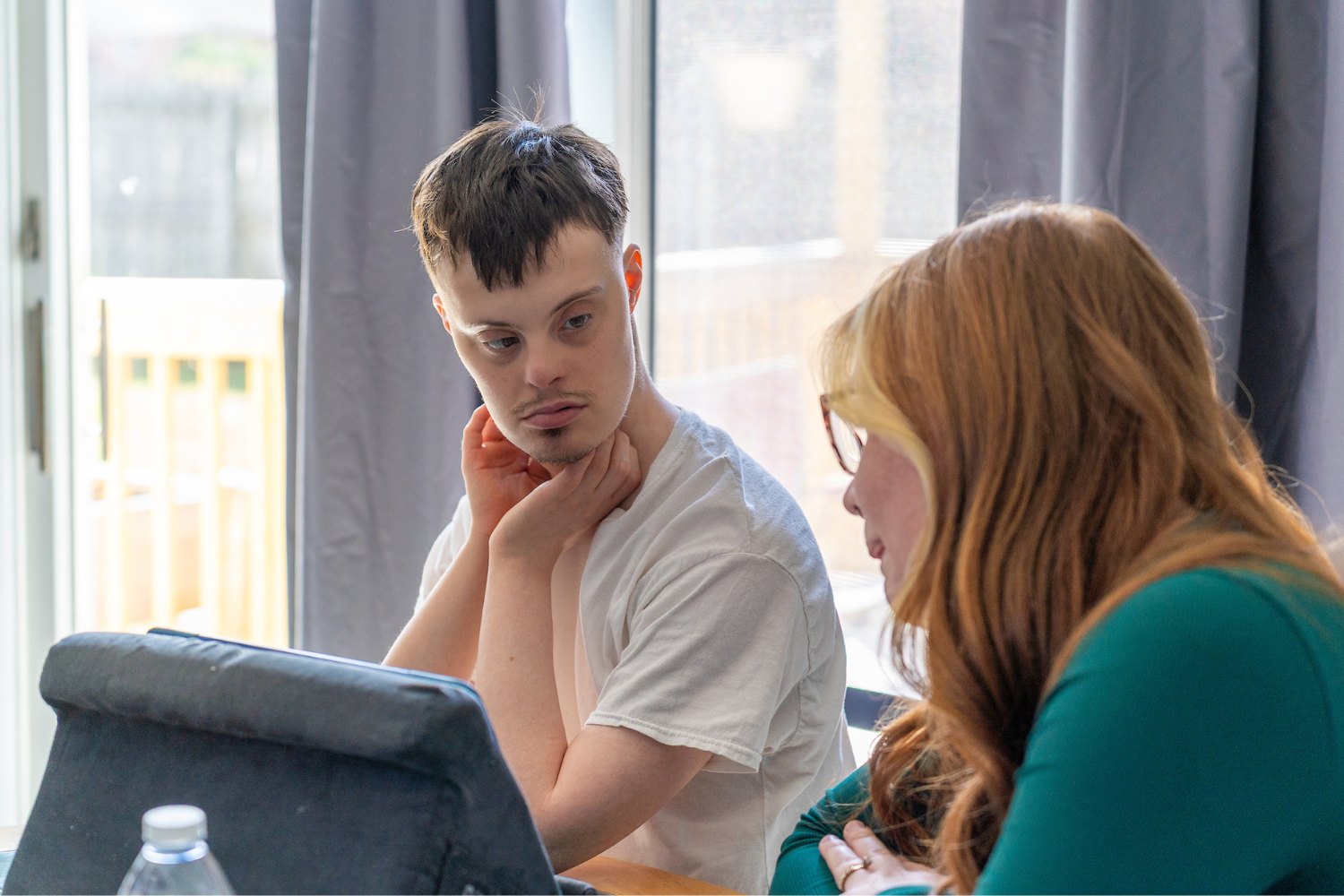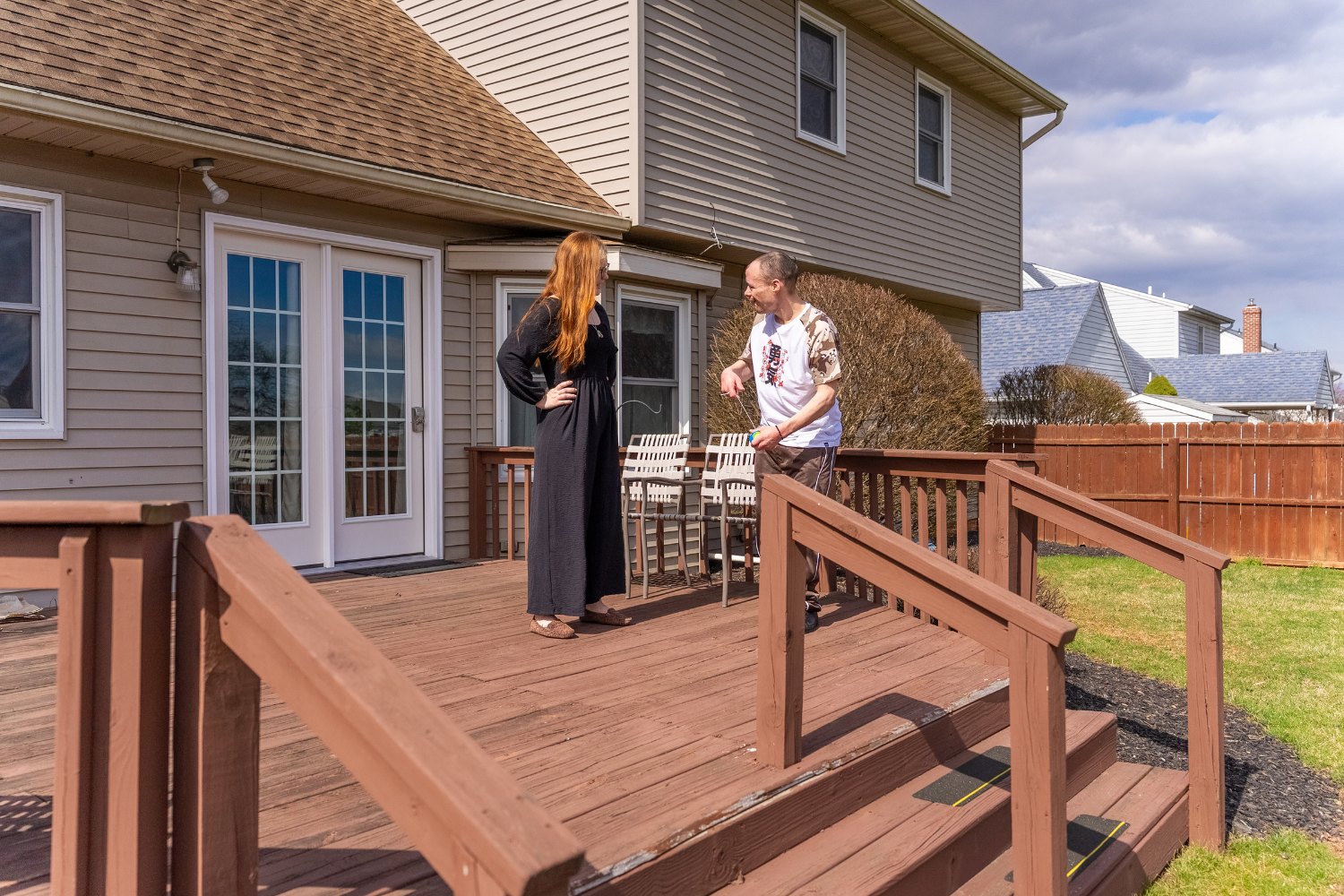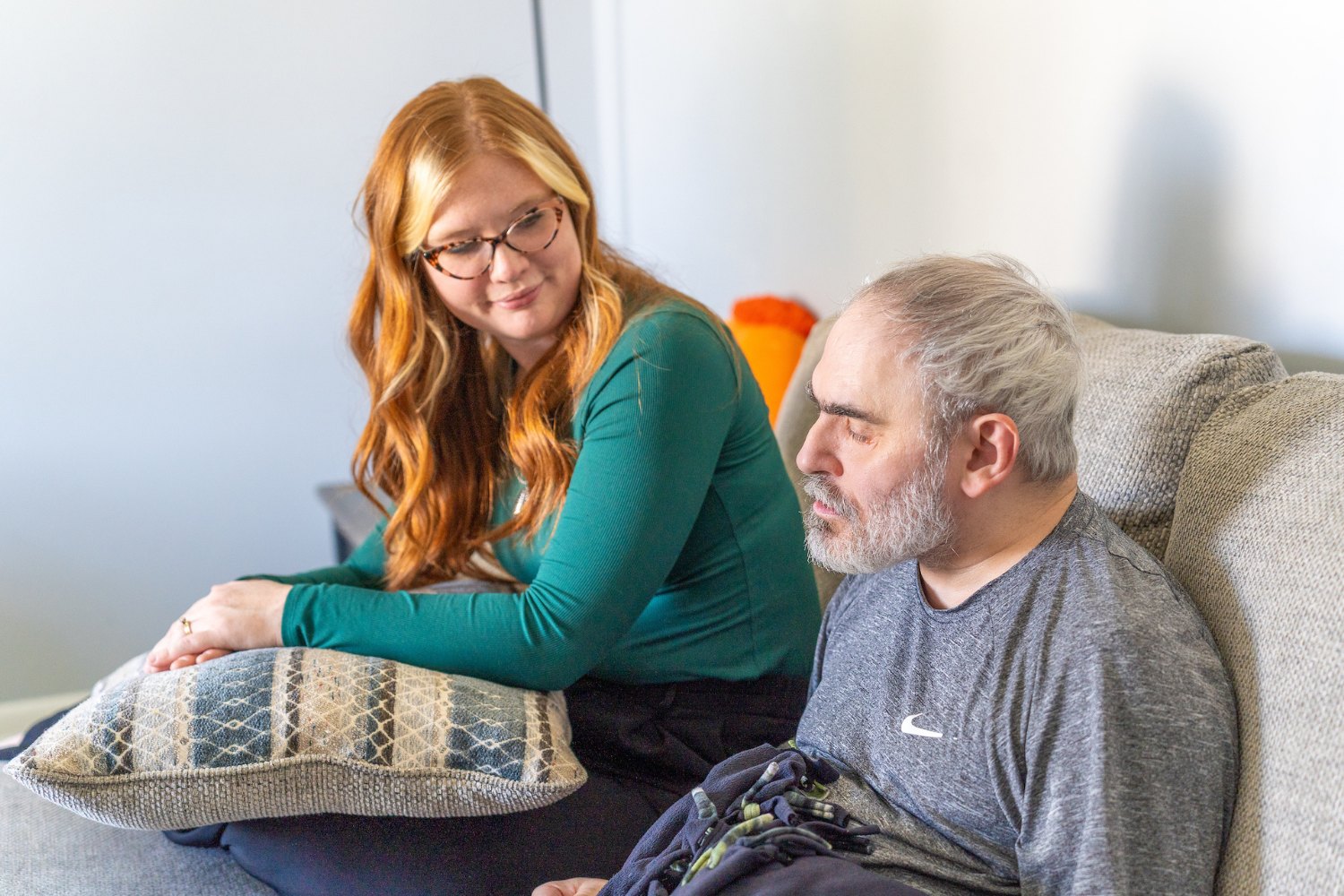For years, every time Jared climbed into a Typical Life Corporation vehicle he was separated from the driver by a partition. The barrier isolated him in the back seat, limiting interaction with his Direct Support Professional.
Little by little, TLC Behavior Coordinator Zoe Slothower worked with Jared, who is on the autism spectrum, to see if that obstacle was necessary. She started by observing him, riding with him in the van and noting how he interacted with others. She taught him and the TLC staff better responses to excitement and frustration.
The partition started to come down as Jared exhibited new behaviors. By the end of December 2024, the barrier was removed. While his verbal communication is limited, Jared now interacts more easily with his DSP as they take day trips to restaurants, stroll in the park, and connect with the community.
“The ultimate goal with restrictive plans is to eventually get restrictions taken off,” says Zoe.

Meeting individuals where they are
Zoe often works behind the scenes, creating detailed behavioral plans and intervention strategies tailored to each of TLC’s individuals. They might require updated plans to reach their personal goals or need new interventions to work through various behaviors.
While some individuals come to TLC with behavioral plans in place, Zoe often finds herself starting from scratch, especially with younger people who might be new to day programs or residential services for those with disabilities. In those cases, she spends significant time in the home learning how the individual communicates and what he or she requires for success. Each person’s needs are unique, especially for those on the autism spectrum.
Many of the individuals whom TLC serves are nonverbal and don’t know sign language, Zoe says. That communication gap can pose a real challenge, but it’s one that Zoe and TLC staff work hard to bridge. To meet people where they are, Zoe builds individualized communication strategies.
“We have some individuals that have their own type of sign language. Using visuals helps a lot,” she says. “We utilize something called a PECS board. That is essentially a book with pictures in it that they can use if they need or want something.”

Building understanding and interventions
While Zoe develops the behavioral plans, it’s the DSPs such as Carol Blanch and Kayla Powell who bring them to life every day, helping individuals assemble the tools to connect with their communities. Carol has been with TLC for 21 years, and her passion for the job shines in every interaction, whether she is working with an individual to make lunch or helping him find his favorite TV show on a tablet.
Kayla spends most of her time working with Ryan, an individual with autism who is constantly on the go at one of TLC’s residential homes. Previous DSPs often were hesitant to take Ryan out into the community. When he couldn’t communicate what he wanted, his frustration could devolve into throwing items on the floor or pushing over furniture.
Zoe conducted a functional behavior assessment on Ryan, spending hours in the home observing his and the TLC team’s interactions. Then she began teaching him and his team better ways to communicate.
“I helped people understand him better,” Zoe says.
As the staff developed interventions and ways to redirect him, Ryan was able to go back out into the community. Today, Kayla and Ryan often drive around looking at trains, stopping for ice cream, or going out to eat.

Connecting to community and home
The attentiveness and compassion of TLC staff often extend well beyond the workday.
One of Carol’s favorite experiences in her job is bringing individuals home for the holidays. The resulting personal connections serve not only the individuals but the greater community. Sharing meals with individuals at her home has shaped how Carol’s family interacts with those on the spectrum and who have other disabilities.
“My kids just gravitate to my partner’s daughter, who is autistic, because they’ve been engrossed in this throughout their whole entire lives,” Carol says.
Beyond operating residential homes, TLC works to expand community access and interaction for individuals. It recently formed a Community Engagement Committee for that purpose. From parades to expos, bingo nights to trunk-or-treats, these events allow individuals to get out, connect, and grow.

‘Put yourself in their shoes’
“I wish that more people understood that people with autism are just like us and they all have feelings. They’re not acting out on purpose,” Zoe says. “Just try to put yourself in their shoes sometimes.”
She encourages the public to gain awareness about autism and break down barriers through small acts of kindness: a wave, a smile, a simple conversation.
At TLC, Autism Acceptance Month in April is a time to lift up the stories of individuals on the spectrum, the staff who support them, and the community connections that help everyone grow.
Simple human bonds and consistent support make all the difference.
